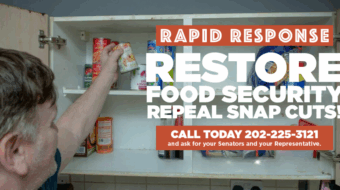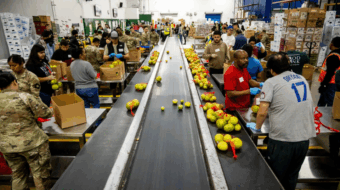A new set of guidelines proposed by the U.S. Department of Agriculture (USDA) is a welcome development but does not take enough steps to reduce bacteria levels, a consumer advocates’ group has said. In a press release put out last Friday the Center for Science in the Public Interest, a Washington, D.C.-based nonprofit sometimes described as the nation’s food police, executive director Michael Jacobson said that while the proposal “would the first major overhaul in over fifty years” it should be modified to bring down the levels of the bacteria groups salmonella and campylobacter in chicken and turkey.
“Part of the proposal would have all poultry facilities monitor for pathogens both before and after chilling the poultry, which would give companies a real-time view of conditions in their facilities,” Jacobson said. “In some plants, company inspectors would check for quality defects, like bruises and sores, enabling USDA to reduce the number of its inspectors checking every carcass. Visual inspection cannot detect food borne pathogens.”
Campylobacter is a bacteria group that includes a species widely recognized as one of the major causes of food-related illness in developed countries, but more than ten others can also cause or contribute to disease in humans. Campylobacter infections in humans are contagious and can be caused by ingesting raw meat or making contact with contaminated food, water or fecal matter, while they can also lead to spontaneous abortions in pregnant livestock.
While less familiar than salmonella, campylobacter causes several times more illness and death, sickening “two to four million people” in the United States each year, out of which 120 to 360 die, according to the poultry section of CSPI’s Food Safety Guide. The guide largely blames current processing methods: individual birds, it says, are washed together and stripped of their feathers by mechanical rubber “fingers” that introduce bacteria, which becomes trapped once the birds are chilled
.
Long associated with eating contaminated chicken eggs, contact with reptiles has also been recently associated with salmonella infection. And while rates appear to be declining, salmonella-related disease and death remain persistent and preventable – a 16 year review in the journal Foodborne Pathogens and Diseases found that about 1300 Americans were killed by the infection, with senior citizens hit particularly hard.
Announcing the proposed changes on Friday, the USDA’s Office of Communications said that the new regime would “save taxpayers more than $90 million over three years” and also lower production costs for businesses while improving health, primarily by targeting “areas of the poultry production system that pose the greatest risk to food safety.”
Agriculture Secretary Tom Vilsack, a former governor of Iowa and a Democratic primary candidate in 2008, said that a “more efficient and effective use of taxpayer dollars” would be achieved in part by “removing outdated regulatory requirements.”
The USDA noted that some workers in the Food Safety and Inspection Service (FSIS) must currently perform some duties not related to food safety, such as identifying and reporting visual defects such as scabs, bruises and sores. The changes would maintain the service’s legally mandated “carcass-by-carcass inspection” but remove these unrelated tasks from inspectors’ do-to lists and ensure that poultry facilities provide evidence that their processing procedures are aimed at preventing contamination.
The current “scab check” procedure wherein staff examine each carcass for blemishes, which may reduce sales but have little impact on safety, will still be available if individual slaughter operators request it, the regulation says. J. Glenn Morris Jr., an infectious disease specialist at the University of Florida, noted in an interview with Bloomberg Businessweek that “[y]ou can’t see or feel a bad bacteria on a bad chicken. …That’s not the way you detect major problems.”
Following the proposal’s publication in the Federal Register, individuals and groups will have a 90 day comment period to send feedback, which can be done online at the regulation’s page on the Federal eRulemaking Portal or by mailing the USDA. The deadline for submission is midnight on April 26.
For CSPI, the overhaul is a net positive but should not be motivated by efforts to save money. “One can’t escape the fact that the government is shrinking, and that historic programs like this one need to demonstrate their value”, Jacobson wrote in his concluding statements. “The proof will be in reduced contamination rates, leading to fewer deaths and illnesses.”









